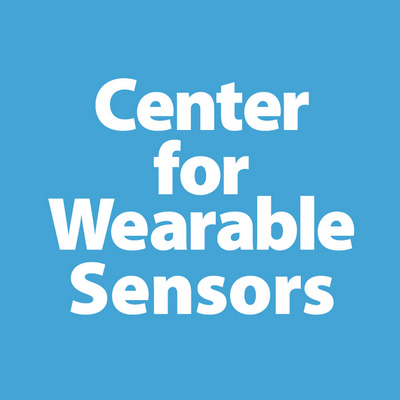Wearable sensors facilitate health, fitness, and military applications
Imagine drawing on your body to measure your glucose level in place of pricking your finger. These enzymatic inks would function as biosensors to take glucose readings through the skin, reporting the results to a Bluetooth device. The creation of epidermal sensing devices able to conform to the contours of the human anatomy such as this bioink is a groundbreaking advancement in electrochemical and nanoengineering towards non-invasive chemical monitoring. Leaders responsible for pioneering this technology, researchers at the Center for Wearable Sensors at the University of California, San Diego (UCSD), are developing biosensors that yield significant insights into the overall health status of the wearer in connection to diverse healthcare, fitness, and military applications. Current projects include creating wearable biofuel cells for powering on-body sensors, and advanced sensors for 'on-the-spot' forensic applications that can benefit field identification of explosives or gunshot residues.
Directed by Professor Joseph Wang, the Center for Wearable Sensors is addressing big questions and grand challenges that are facing the wearable sensors sectors and accelerating the pace of innovation by tackling the toughest technical bottlenecks. Their work to create a series of the world’s most advanced “lab on the body” systems is therefore built around close collaborations between world-renowned faculty, students, and industry partners with complementary expertise in various aspects of wearable sensor systems. This collaboration spans research fields including low-power circuits, materials, electrochemistry, bioengineering, wireless network technologies, preventive medicine, the life sciences, and more. Creative and relevant, the Center is focused on revolutionizing key components of wearable sensor systems, including:
- Taking multiple measurements from diverse sensors on the body: This involves simultaneous, real-time measurement of multiple parameters including chemical, physical, and electrophysiological modalities that can be used for diabetic and glucose management applications.
- Ultra low-power and self-powered sensor systems: Researchers are developing self-powered sensor systems to be embedded into media such as clothing. Such autonomous systems could monitor heart rate, hydration levels, blood sugar and more, without any direct user interaction required.
- Novel biocompatible and stretchable materials: These materials include stretchable semiconducting polymers with properties mimicking biological tissues and long-term implanted and minimally-invasive sensors.
- Novel methods for device fabrication and integration: Flexible, printable micro-sensors for on-body sensing as well as high-density conformal sensor arrays provide new ways to apply biosensors.
- Clinical Uses and Clinical Trials: Medical researchers and clinicians from UCSD’s world-class Health System work with engineers to address clinical medicine and public health issues that are crucial for realizing the promise of wearable sensing.
- Novel micro and nano Wi-Fi networks for data transmission: Pushing the power limits of wireless transceivers enables ultra-long battery life and/or net-zero-power systems for energy autonomy.
- Cloud data storage and analytics
Bio
Directed by Distinguished Professor Joseph Wang in the heart of UCSD at the Jacobs School of Engineering, the Center for Wearable Sensors brings together top UCSD faculty, students and researchers in sensors, low-power circuits, materials, electrochemistry, bioengineering, wireless network technologies, preventive medicine, the life sciences and more. This coordinated environment fosters the acceleration of research and system development, and helps prepare students to become leaders in tomorrow’s workforce.
Advanced research informed by the needs of industry partners sets the stage for improved human health, economic growth and innovation in the myriad fields tied to the wearable sensor platforms of tomorrow. The industry partnerships are facilitated by Executive Director, Anne O’Donnell, and among the notable researchers is Patrick Mercier, Associate Director of the Center and Professor of Electrical and Computer Engineering. Motivated and far-seeing, the Center continually offers programs that guide, educate and support innovators in order to ensure that breakthroughs and innovations have the greatest chance of moving from the lab to the marketplace.
The backdrop for all this is San Diego, a global leader in wireless technologies and digital health. Collaborations between the Center for Wearable Sensors, industry partners and neighboring research institutions in San Diego and beyond offer unrivaled potential for research partnerships and innovation that will improve the lives of humans everywhere.
Researchers include:
SENSORS AND SYSTEMS
Gert Cauwenberghs
Wireless dry and non-contact biopotential monitoring
Todd Coleman
Information theory, neuroscience, machine learning, bioelectronics
Harinath Garudadri
Signal processing, wearable electrophysiology
Patrick Mercier, Associate Director
Wireless communications, energy-harvesting integrated circuits, ultra-low-power systems
Albert P. Pisano
MEMS, manufacturing, low-cost sensors
Joseph Wang, Director
Non/minimally-invasive electrochemical sensing, printable sensors, bioelectronics
ULTRA-LOW POWER, MICRO- AND NANO- NETWORKS
Drew Hall
Biosensors, medical electronics, sensor interfaces
Gabriel Rebeiz
RFICs for microwave and mm-wave systems, low-power circuits
Tajana Rosing
Energy-efficient systems, embedded systems
NOVEL MATERIALS AND FLEXIBLE ELECTRONICS
Shadi Dayeh
Electro-neural interfaces and compact wearable electronics
David Gough
Long-term glucose sensors, biocompatible materials
Darren Lipomi
Stretchable electronics, polymer chemistry, stimuli-responsive materials
NOVEL FABRICATION AND INTEGRATION METHODS
Mike Heller
Sample-to-answer and POC diagnostics for cancer, brain injury, stroke, diabetes
Yu-Hwa Lo
Microfluidics, biomedical devices for in-vitro diagnostics, bio- and nanophotonics
CLOUD DATA STORAGE ANALYTICS
Chung-Kuan Cheng
Parallel processing, power network analysis for VLSI systems and circuits
Tzyy-Ping Jung
Dry & non-prep EEG sensors, wearable and wireless EEG systems
Gert Lankriet
Machine learning, personalized mobile health
MEDICINE AND CLINICAL WORK
Kevin Patrick, M.D.
Mobile and social technologies for health care
DESIGN
Benjamin Bratton
UC San Diego visual arts professor
For more information, visit http://www.jacobsschool.ucsd.edu/wearablesensors/


